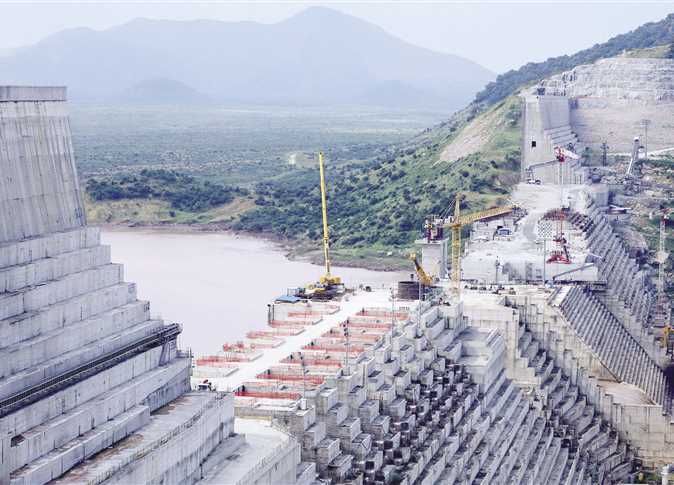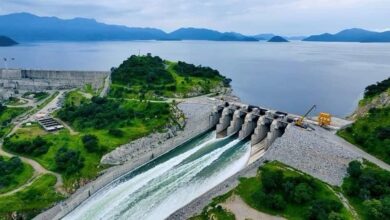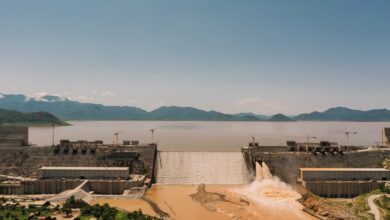
A Professor of Geology and Water Resources at the Cairo University Abbas Sharaky announced that Ethiopia aims to store 10.5 m3 billion at 595m in the upcoming rainy season this year.
This will complete its target set since the start of filling the reservoir of the Grand Ethiopian Renaissance Dam for a total of 18.5 m3 billion.
Sharaky explained that the rainy season in Ethiopia begins in May with light rains that increase slightly in June, then heavy rains begin in July until the end of October.
He expects that Ethiopia will store a small amount this summer, explaining the reason that “The difference between the middle passage and the two sides (of the dam) is currently about 14 m from the west and 17 m from the east, and here the two sides must be raised to the level of the middle passage to accommodate the amount of flood.”
He added that there are less than four months left for the floods to come, and it is difficult to raise the two sides and the middle passage with a height of about 1,000 m and a width of 60 m.
Each meter raised needs 60,000 m3 of concrete, he said, and complicating matters is that both sides must have technical work done as well and not only concrete filling, which requires double time.
Negotiations over the GERD have officially stopped since April 2021, after Egypt, Sudan and Ethiopia failed to reach an understanding before the start of the second filling of the dam, which Ethiopia implemented in July.
Cairo and Khartoum reject Ethiopia’s insistence on filling the dam before reaching a binding agreement on filling and operation.
Egypt, which relies considerably on freshwater from the Nile, has voiced fears that the GERD would negatively impact the country’s water supply.
Egypt has also insisted that measures be put into place to protect downstream countries in case of drought during the dam’s filling process.
Egypt and Sudan say they want a legally binding agreement, while Ethiopia says any pact should be advisory.
Egypt and Sudan consider the dam a threat to their vital water supplies, while Ethiopia considers it essential for development and doubling its electricity production.
The downstream nations fear possible blows to water facilities, agricultural land, and overall availability of Nile water.
Negotiations over the dam between Egypt, Ethiopia, and Sudan have stalled for years, with the three parties ultimately failing to reach any concrete agreement.
The disputed dam is the largest hydroelectric project in Africa, with a cost of more than four billion dollars. The construction of the dam began in 2011.
It is considered to be one of Egypt’s most serious water issues.


